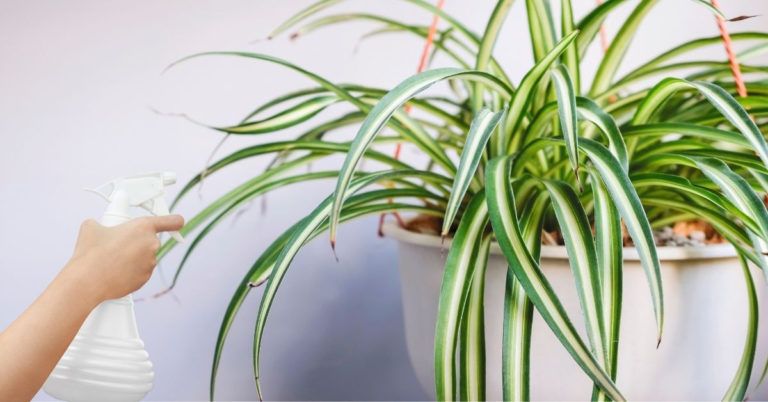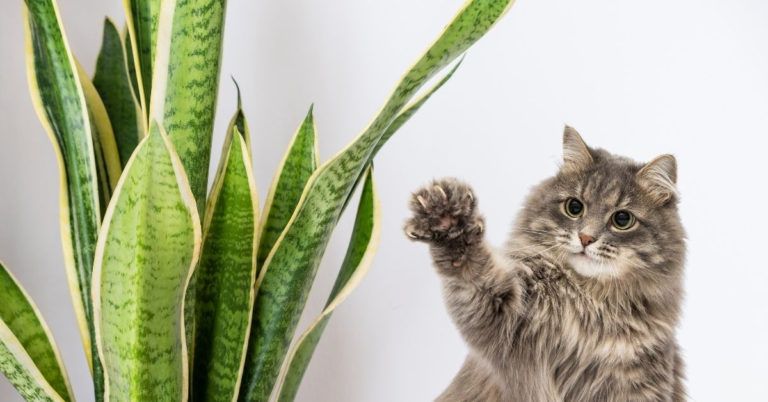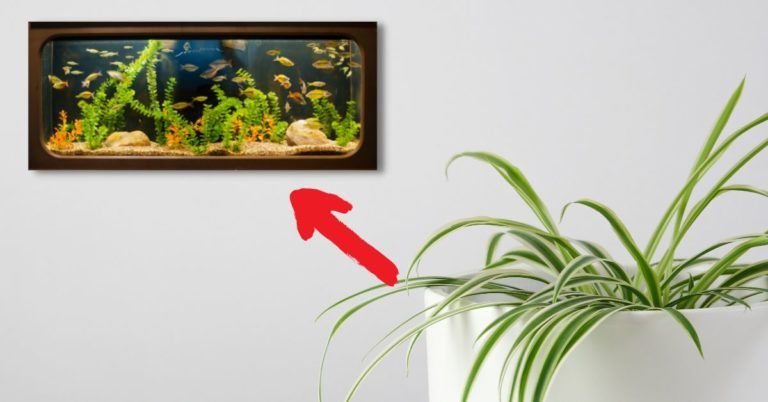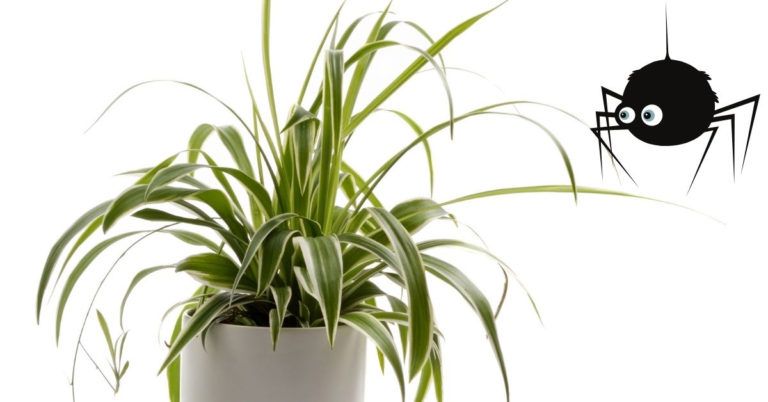8 Different Types of Spider Plants You Should Know (With Pictures)
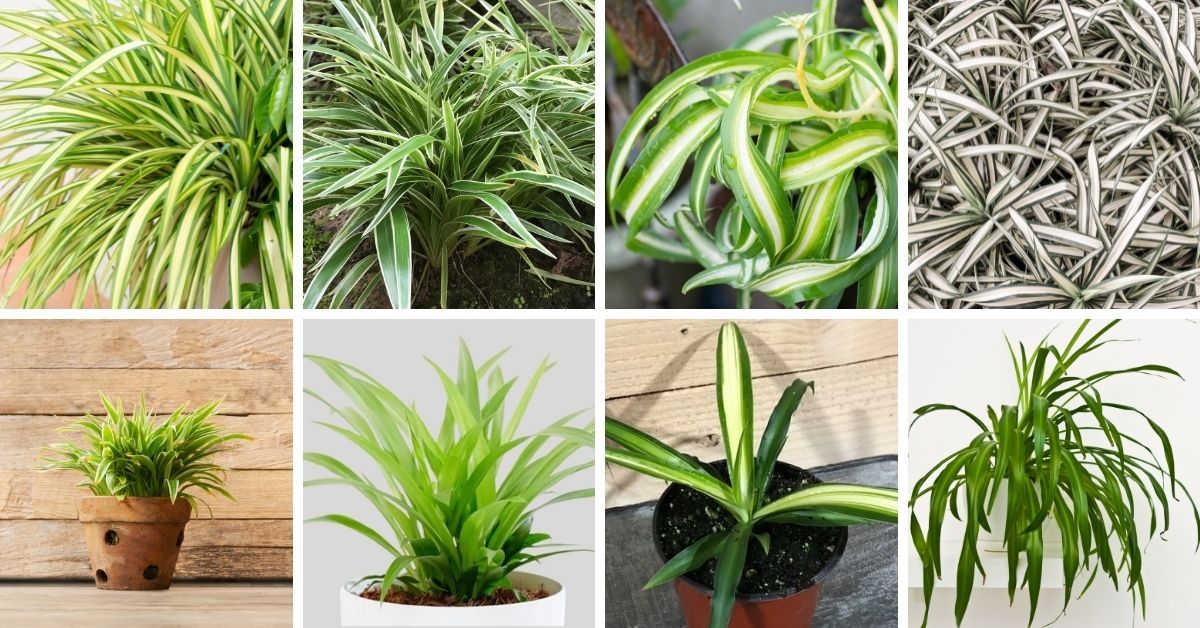
If you’re looking for a plant that is easy to grow and requires little attention, spider plants may be a perfect choice.
These plants are incredibly versatile and can even thrive in low-light environments, making it perfect for beginner houseplant lovers.
Spider plants come in a wide variety of colors, sizes and shapes. This makes it easy to find a plant that will fit your style.
In fact, there are over 200 different varieties of spider plants out there, and they all have their own unique features.
In this blog article, we will see 8 different types of spider plants that you might want to add to your houseplant garden.
Let’s jump right in.
Variegated Spider Plant
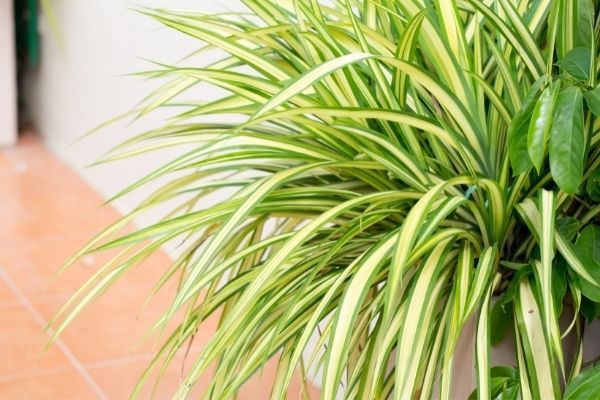
Botanical Name: Chlorophytum comosum ‘Vittatum’
The first in this list is the most popular and widely available spider plant, the Vittatum spider plant. As a matter of fact, you will most likely find this variety at your local nursery or garden center.
The vittatum spider plant, also known as the variegated spider plant, is one of the most recognizable plants among houseplant enthusiasts.
The key characteristics of this particular variety are the medium green leaves that have yellow vertical stripes in the middle.
The leaves are also huge, and they are typically arranged in an alternating pattern.
It can grow to be 2 to 3 feet long when fully grown.
This particular variety is an excellent choice if you like plants with light, bright colors and if you want to add some life to your home’s interior.
Variegatum Spider Plant
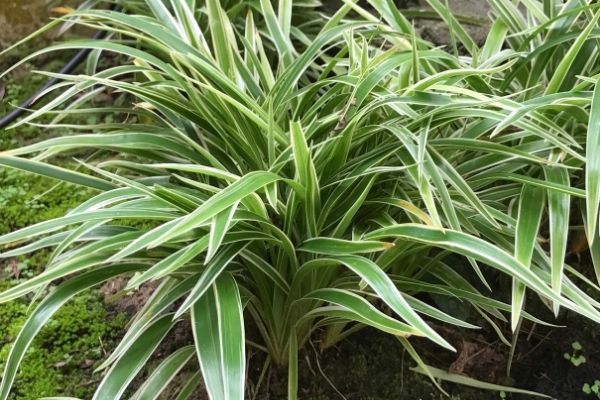
Botanical Name: Chlorophytum comosum ‘Variegatum’
Next, we have the Variegatum spider plant. This is another very popular spider plant and is often found in your local nurseries.
Also known as the reverse variegated spider plant, the variegatum spider plant has the opposite color of the vittatum spider plant.
Variegatum leaves feature beautiful bright yellow borders with broad green colors running across the middle of the leaves. Precisely the opposite of the vittatum spider plant.
The variegatum spider plant can also grow up to 2 feet in length when fully grown. This variety also features the same alternating pattern of leaves that are large and medium green in color.
The variegatum spider plant is an excellent choice for people looking for a plant that will make a bold statement in their house.
Also read: Do Spider Plants Flower? (Answered)
Bonnie Spider Plant
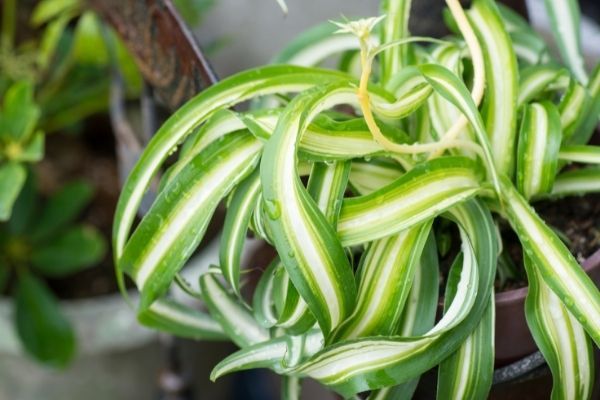
Botanical Name: Chlorophytum comosum ‘Bonnie’
The Bonnie spider plant is known for its unique curly leaves and graceful looking foliage.
A Bonnie shares a resemblance with a Vittatum in appearance. This plant has medium green leaves with yellow stripes that run vertically down in the middle of the leaves.
However, the key characteristic that makes the Bonnie spider plant stand out from the rest is the shorter, curly leaves.
This particular variety has wavy, curly leaves that are typically arranged in an alternating pattern.
This particular variety is a great choice if you are looking for a plant that will fit into small spaces.
Because of the smaller leaves, this plant will only grow up to 8 to 18 inches in size.
It’s ideal for tiny rooms, patios, and bathrooms because of its size.
In fact, the Bonnie spider plant is also known as the “Toilet Plant” because many plant parents use the Bonnie to decorate their bathroom.
Zebra Spider Plant
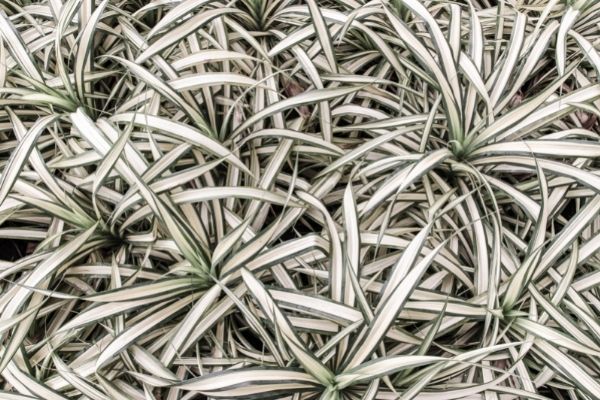
Botanical Name: (Chlorophytum laxum ‘Zebra’)
If you are looking for a spider plant with a unique and bold color palette, you should consider the Zebra spider plant.
This particular variety is characterized by its large leaves with dark green edges and bright white stripes running across the middle of the leaves.
The key characteristic that makes the Zebra spider plant stand out is the white stripes instead of the usual yellow in most spider plants.
This particular variety is a great choice if you want to add some life to your home’s interior.
It will definitely turn heads and be a great conversation starter due to its unique and unusual color combination.
Because this particular variety has such a bold color palette, it will definitely make a statement in any room.
Ocean Spider Plant
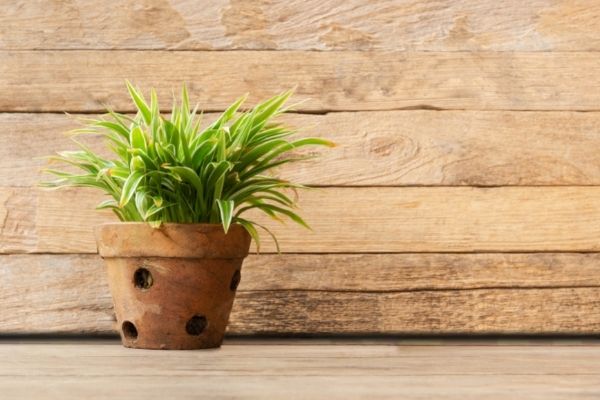
Botanical Name: Chlorophytum comosum ‘Ocean’
The Ocean spider plant is a great choice for people who want a smaller spider plant that will fit into tiny spaces.
If you like plants with a tiny, tropical look, this is a fantastic choice for you.
The Ocean is a tiny spider plant with yellow borders and a green center, similar to the Variegatum. In fact, this plant is also known as the Miniature Variegatum.
Many who live in smaller apartments prefer the Ocean spider plant because of its small size.
I’ve also seen many people put this particular variety of spider plants on their desk or coffee table because of its small size.
People also love to hang this plant from the ceiling because of its light weight.
Lemon Spider Plant
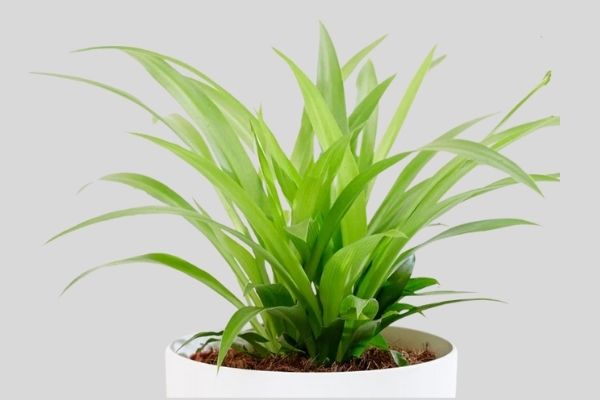
Botanical Name: Chlorophytum comosum’ Lemon’
Compared to other spider plants on this list, this one is relatively new and offers a novel take on an old, classic variety.
Instead of the usual yellow and green combination on the leaves, the Lemon spider plant only has one color: a bright lemony green.
The all-green leaf color makes the Lemon spider plant stand out from the rest.
The Lemon spider plant is also a tiny spider plant that can fit into small spaces and is ideal for people who like smaller plants.
Because it’s so tiny, it’s ideal for people who live in tiny apartments. It’s perfect for people who want to have a plant in their bathroom that will make a bold statement.
This is also a great choice if you are looking for a plant that will grow in any environment because of its ability to thrive in indoor or outdoor conditions.
Hawaiian Spider Plant

Botanical Name: Chlorophytum comosum ‘Hawaiian’
The Hawaiian spider plant is another one of my favorite spider plants due to its unique color combination.
This plant is also known as the Golden Glow among many gardeners.
The golden glow on this particular variety is caused by the variegation of the leaves, which creates a multicolor effect.
The golden glow also makes the Hawaiian spider plant stand out from other spider plants.
Intriguingly, the Hawaiian spider plant produces variegated new leaves that gradually fade over time, giving them a multicolored appearance.
Early in the Hawaiian spider plant’s life, the leaves will display a striking variegation pattern with whites, yellow, and light green color.
However, as the plant becomes older, the variegation turns dark green.
The multiple colors spotted on this plant make the Hawaiian spider plant stand out from other varieties of spider plants.
Solid Green Spider Plant
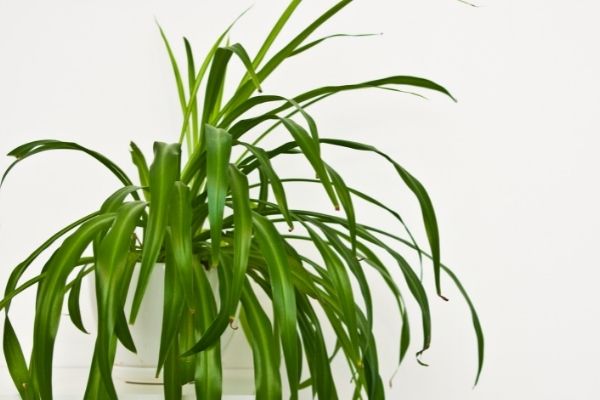
Botanical Name: Chlorophytum comosum
Last but not least, the last plant on this list of different types of spider plants is actually the hardest to come by. In fact, it is so rare that it is tough to find online.
Also known as the Shamrock spider plant, this solid green spider plant features only one color.
Where most varieties of spider plants feature a combination of yellow and green, this non-variegated spider plant has only one color: a deep, solid green.
Some gardeners I’ve talked to believe that this is how spider plants initially grew in the wild.
In my opinion, these solid green spider plants are an excellent choice for people who prefer a more plain and simple plant.
In addition, solid green plants are much easier to care for than variegated varieties, which are more difficult to maintain.
Plus, it will be simpler to match your house decor or create a cohesive look in your home with this solid green spider plant.
Types of Spider Plants FAQS
Do all spider plants have stripes?
No, not all spider plants have stripes. Some varieties of spider plants only have one single color on their leaves, like the solid green variety on this list.
Another example from this list is the Lemon spider plant, whose leaves do not have any stripes.
How do you identify a spider plant?
You can identify a spider plant by looking at the leaves. The shape of the leaves will vary between different varieties of spider plants.
Some are short and curly, while others are tall and straight.
The color of the leaves will also vary between different varieties of spider plants. Some spider plants will have yellow and green leaves, while others will have only green leaves.
Are there solid green spider plants?
Yes, there are solid green spider plants out there. However, it is rare to come across one.
If you are looking for a solid green spider plant, take a look at the Shamrock variant. This variant of spider plant is unique because it has a solid green leaf that is free of stripes.
But be ready for the hunt. Based on my personal experience, finding a solid green spider plant is much more difficult than finding a variegated one.
In fact, it’s extremely hard to find them in stores, and online retailers often sell a variegated one.
Are all spider plants the same?
No, not all spider plants are the same. As a matter of fact, there are more than 200 varieties of spider plants out there.
What’s more, is that new types of spider plants keep on being developed by scientists and gardeners.
Yet, most people only know about the few varieties that are commonly sold in stores and online.
Also read: 10 Benefits of Spider Plants
What plant is similar to a spider plant?
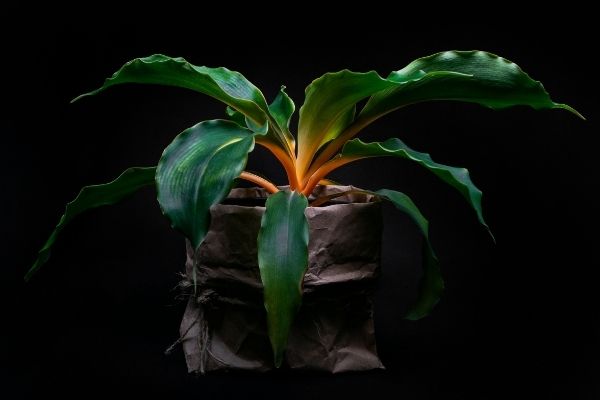
When it comes to plants similar to spider plants, Chlorophytum orchidastrum should be at the top of the list. Also known as the Fire Flash, this plant is a distant relative of the spider plant.
In fact, many people confuse this plant with a spider plant. Some even go as far as calling this plant an Orange spider plant.
Like spider plants, the Chlorophytum orchidastrum is an easy plant to take care of.
However, you want to be careful as this plant has been reported as toxic to some pets like cats and rabbits.
Also read: Is spider plant toxic to birds?
Final words
So there you have it, my list of the top 8 different spider plants types you should pay attention to.
There are so many different kinds of spider plants to choose from. This is a great way to start your search for the best spider plant for your home.
This list of the different varieties of spider plants is not exhaustive. I have only included the most popular types that you can find easily.
I hope that you find this article useful when you’re looking for the best spider plant for your home.
Now I’d love to learn from you:
Do you know of other spider plant varieties that I should include on this list?
Please let everybody know by commenting below.
If you are interested in learning how to take care of your spider plants, you can check out our beginner spider plant care guide.
Until then, happy gardening!
